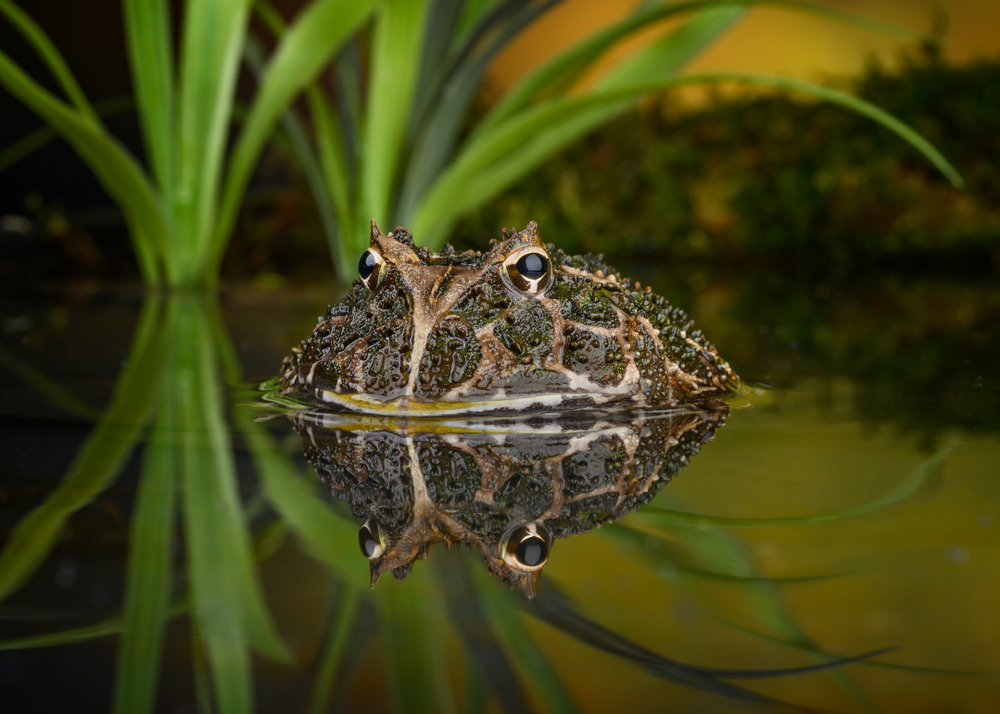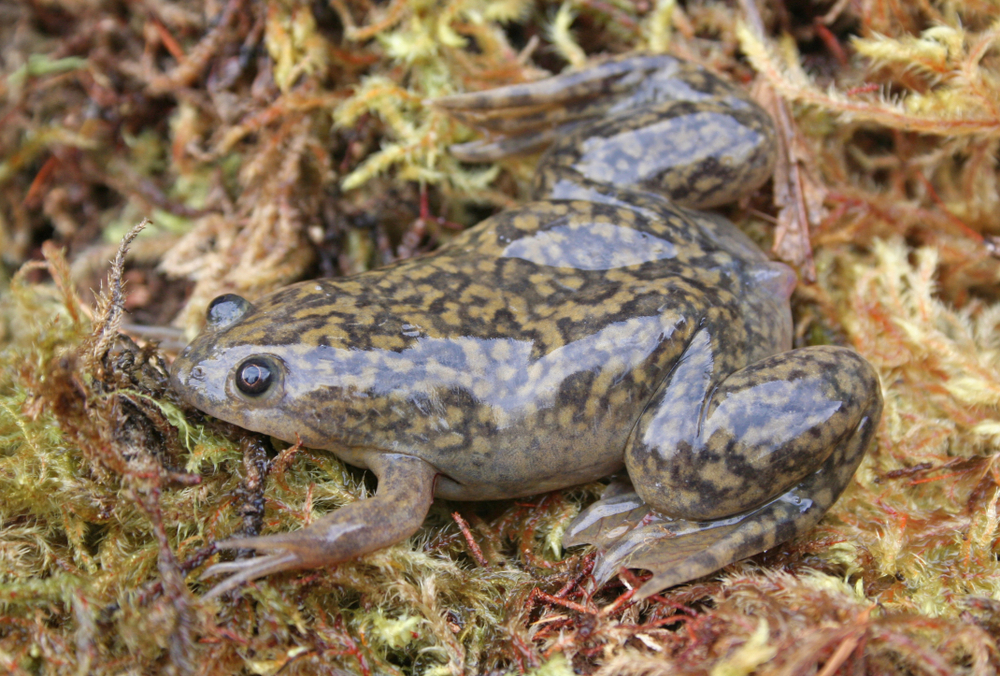About
#Amphibian
The American horned frog (Ceratophrys ornata), also known as the Argentine horned frog or “Pacman frog”, is a stout, round amphibian native to the grasslands and wetlands of Argentina, Uruguay, and Brazil. Belonging to the Ceratophryidae family, it gets its name from the horn-like projections above its eyes and its massive, gaping mouth that resembles the classic video game character Pac-Man.
This frog grows up to 15–20 cm (6–8 inches) long and is known for its vibrant green, yellow, or brown mottled coloring—perfect for camouflage among leaf litter. It is a sit-and-wait ambush predator, remaining motionless and buried in substrate until unsuspecting prey comes close. Then it strikes with a lightning-fast lunge, using its powerful jaws to devour insects, lizards, small mammals, and even other frogs.
Despite its bulky body and short limbs, the American horned frog is a highly effective hunter. It has a voracious appetite, and captive individuals are known for biting fingers if mistaken for food. They are mostly terrestrial and inhabit moist environments where they can burrow and stay cool.
These frogs breed during the rainy season, with males calling loudly to attract females. Females can lay hundreds of eggs at a time, which hatch into large, aggressive tadpoles that may exhibit cannibalistic tendencies.
Popular in the pet trade for their striking appearance and quirky behavior, American horned frogs require careful handling and proper humidity. In the wild, their populations are stable but face pressure from habitat loss and collection.
Threatened:
Extinct
Critically Endangered
Endangered
Vulnerable
Near Threatened
Least Concern




































































